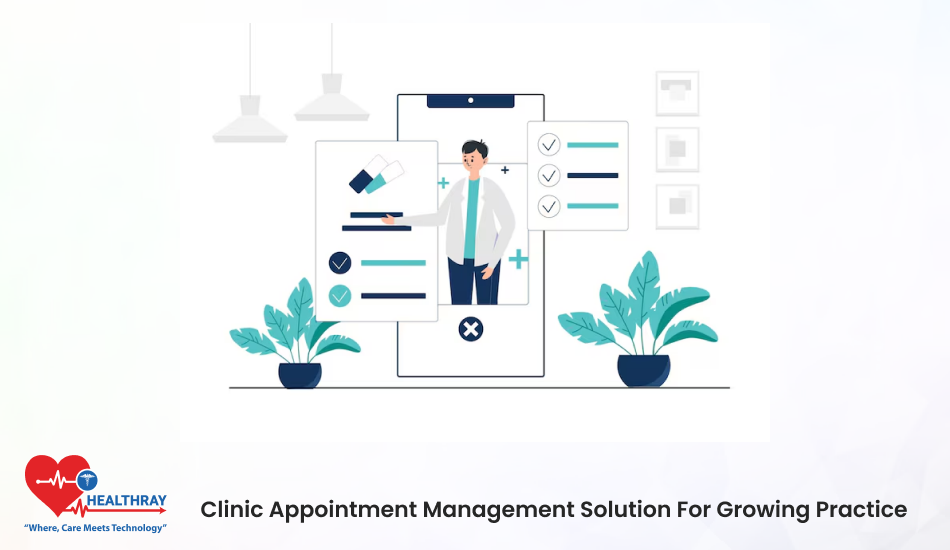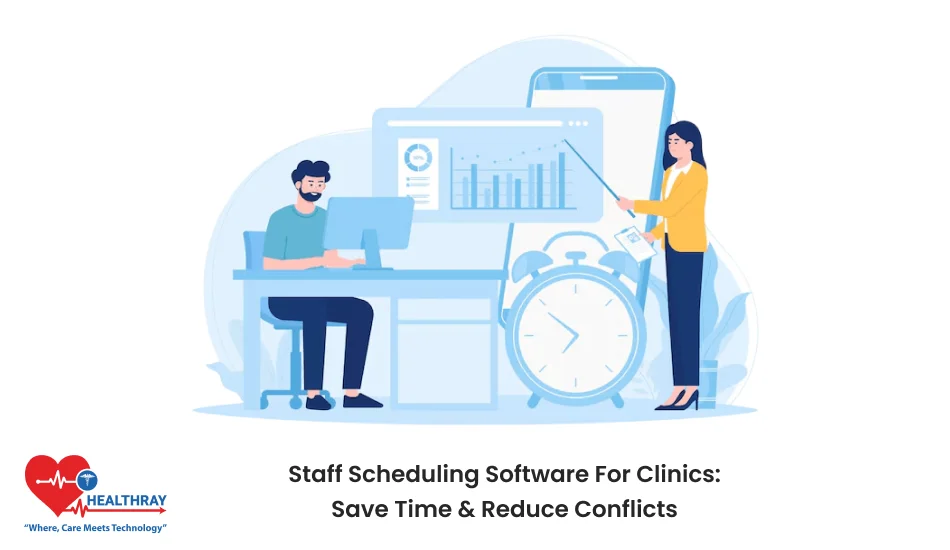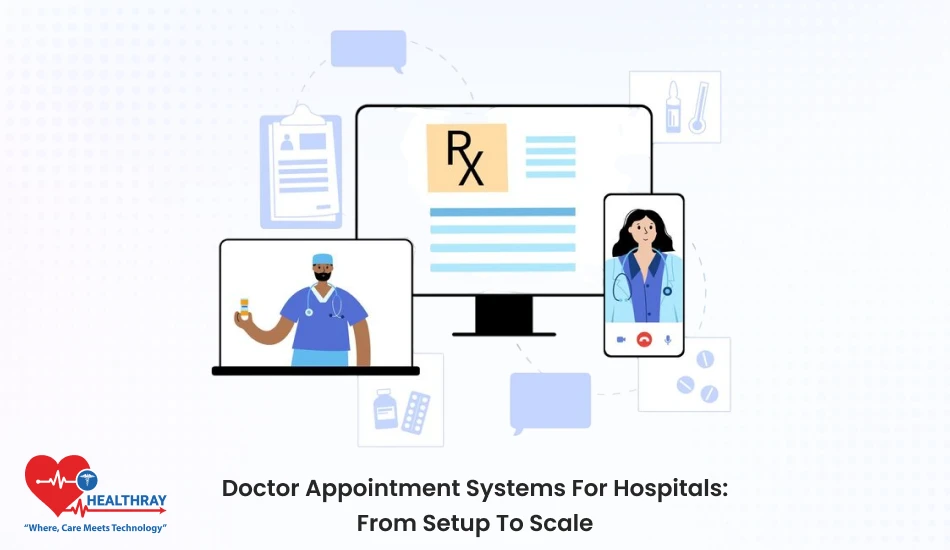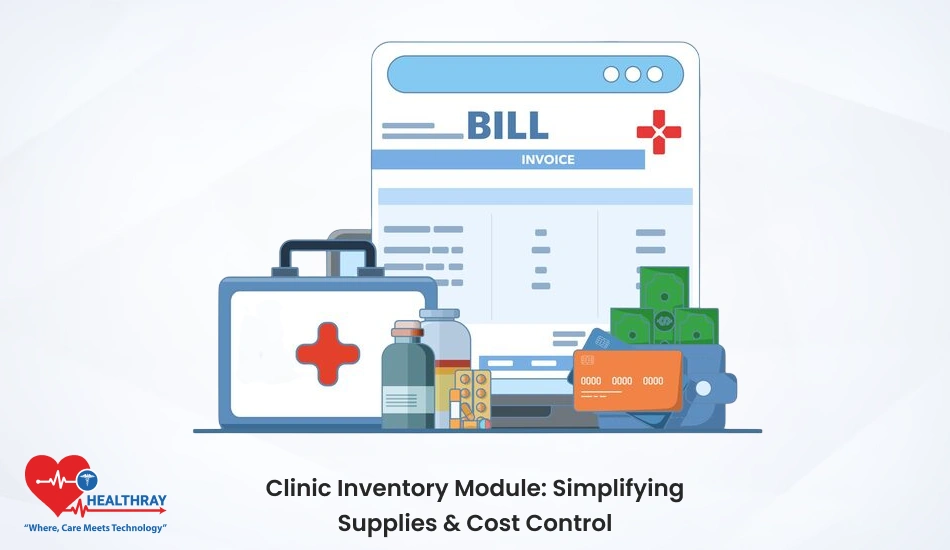Summary
Sample tracking is the heart of a modern lab system. Have you ever thought a simple labeling error can create a huge impact on patients’ reports? Hospital workflows should therefore incorporate automated laboratory systems. With technologies like RFID tagging and barcodes, the lab department will get real-time visibility about the sample’s status, stage and condition. In this blog, I will discuss how best laboratory systems simplify sample tracking and workflows. Also, I will discuss how it helps the lab department minimize error and provide accurate results in less time.
Introduction
Modern laboratories operate in increasingly complex healthcare ecosystems where speed, accuracy and compliance are equally important. Do you think traditional paper-based systems will still hold the current lab standards? Traditional paper-based and fragmented tracking systems are not effective nowadays, especially where labs need to maintain precise records of every sample.
Are you still struggling with maintaining sample data manually? You don’t have to put up with paper-based methods anymore. This is where laboratory system software becomes a game-changer for the healthcare organizations. Manual sample collection in the traditional system caused me stress. The majority of the entries are inaccurate, and fixing them took hours. My manual errors have decreased since I began integrating automated laboratory information management systems into the workflow, and I am now free to concentrate on my core competencies instead of wasting time manually gathering records and entering them into the system.
These digital solutions automate the entire sample cycle from collection and analysis to reporting. With a hospital management system, you can properly track the specimen and keep it in a secure platform. Furthermore, Automated sample handling, instrument integration, and digital workflows reduce the workloads of repetitive tasks and make them error-free.
Some Interesting Benefits of Laboratory Systems
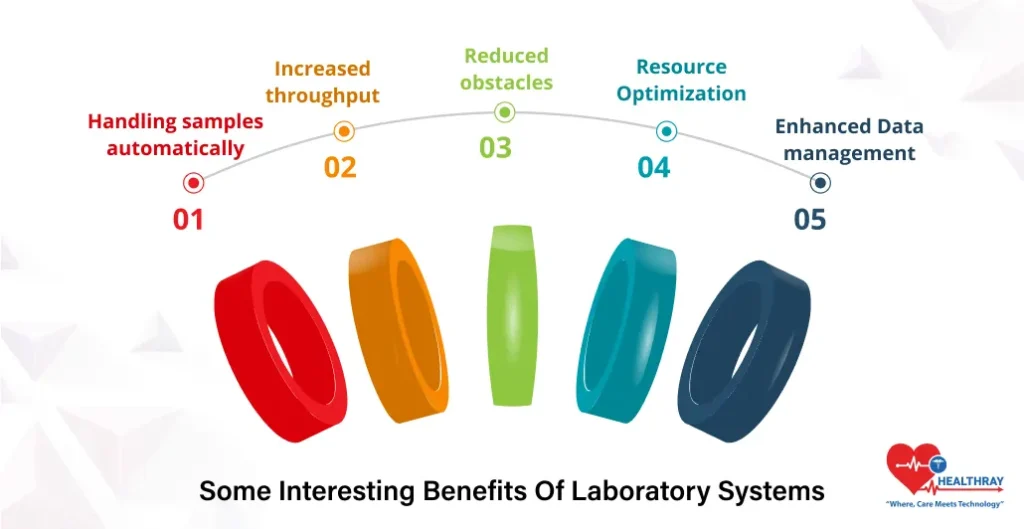
Let’s check out:
Handling samples automatically
Modern labs use automation and robots that facilitate the sample handling process. Furthermore, the best laboratory system automatically prepares samples, labels and sorts them, and also maintains precision in all the steps of workflows. Additionally, this automation significantly reduces manual efforts and errors; now, lab technicians can focus on complex analysis and quality assurance of the system.
Increased throughput
Through automations, now labs can efficiently process the samples without taking on the burden of hiring an extra team. Further, the best laboratory system constantly works around the clock. It does not matter whether staff are working normal hours or not; laboratory systems can remain active even during nights. Additionally, it improves the sample processing speed and lab productivity. Overall, with a hospital information system, labs can easily handle higher volume and provide patients with faster results.
Reduced obstacles
Lab operations run smoothly when automation is incorporated into the system. Further, the digital laboratory system simplifies all the laborious tasks, from sample preparation and analysis to reporting results. In the traditional system, technicians needed to call every department to prepare a complete report of patients. However, with automated software you don’t have to stress about calling every department and entering records manually in the system. Furthermore, the smart LIMS system reduces manual delays and process interruptions. Thereby, it increases the efficacy of the system and helps hospitals complete critical tasks on time.
Resource Optimization
With automation, labs can utilize their resources more efficiently. Furthermore, digital systems efficiently use reagents and consumables, thereby reducing waste and increasing efficiency. Further, in the traditional system technicians needed to track the resources manually. It took a huge amount of time to determine the resource utilization and stock availability.
Further, the automated laboratory system tracks the resources in real time, ensuring material is available for all tests. When resources run out, the lab system notifies technicians. Overall, it not only reduces resource wastage but also keeps the lab performance consistently high.
Enhanced Data management
Modern laboratory system simplifies the entire procedure of data handling. Furthermore, in the traditional system, technicians needed to collect information from different departments manually and record the same in the system. This enhances the chances of errors and most of the sample testing operation took a few weeks to complete. But the good news is that you no longer need to take the hassles of testing samples manually.
Further, lab management system software automatically captures data from lab instruments and stores it in the laboratory information system. Thereby, it makes the sample testing process more fast, accurate and secure. Overall, it minimizes the data duplication and human errors and significantly reduces the result processing time.
Impact on Patient Care and Lab Productivity
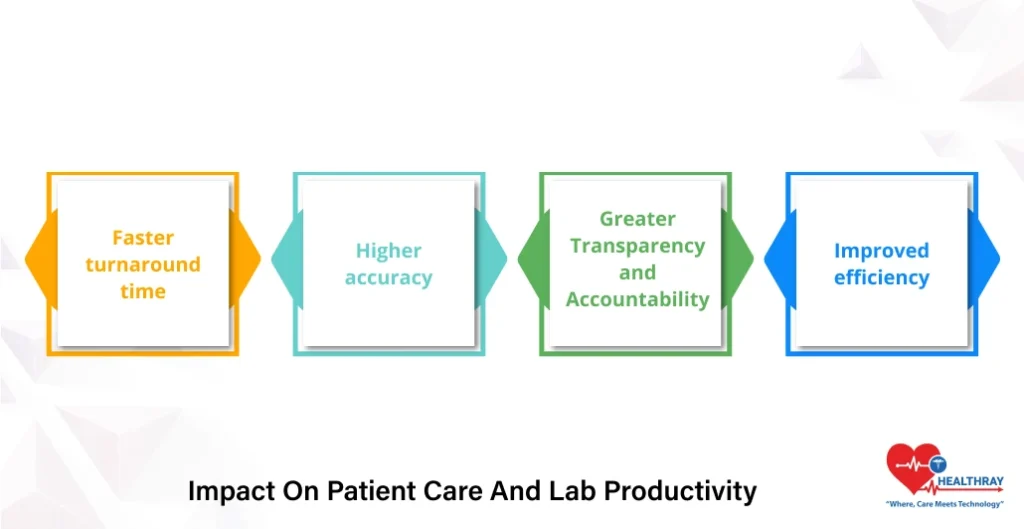
Let’s check out:
Faster turnaround time
Automation and real-time tracking integration make the sample processing faster and more accurate. Furthermore, system automatically receives samples, analyse and generate report without any manual follow ups. In manual infrastructure, it took hours to complete the report; now it takes a few minutes to generate the same report. Further, this speed and accuracy provides incredible benefits to emergency departments where timely diagnosis and treatment decisions are crucial for patient care.
Higher accuracy
With automation, sample handling and data handling processes become very precise. Further, traditional systems were usually prone to human errors such as wrong labeling, data mismatch and incomplete reports. Are you still facing the same challenges with manual data entries?. Now this is the right time to upgrade your system with cutting-edge technologies; this will not only simplify your hectic workload but also help you in getting fruitful outcomes.
Furthermore, laboratory systems track all the reports from sample collections to final reports. Thereby, it eliminates manual errors and provides reliable test results and now doctors can confidently make diagnoses and treatment decisions.
Step towards digital era with our healthcare solution
Revamp your hospital facilities and embrace change for better healthcare management. Ease in managing and organizing large medical datasets leads to effective analysis. Seize the opportunity now!
Greater Transparency and Accountability
Automation helps you maintain the complete digital records of the samples from collections to reporting. Furthermore, laboratory systems make all the steps trackable and now lab staff can easily identify the stage that is experiencing delays and issues. Further, this transparency not only ensures regulatory compliance but also builds trust among patients and hospitals. As every process is efficiently documented, this enhances the accountability. Also, it reduces the risks of data tampering and record loss.
Improved efficiency
The laboratory system reduces the repetitive tasks of staff members such as data entry, sample labeling, and interdepartment follow-ups. Further, lab staff can now focus on high-value technical and research activities; this overall boosts the lab’s productivity and innovation. Is your staff still spending time on manual processes and unable to focus on important technical work?
This is not an effective approach to running medical operations in 2025. Further, this is high time to adapt the lab billing software to make the operations smoother and more connected. Moreover, it helps lab departments to complete critical tasks on time.
Future Trends in Laboratory Systems
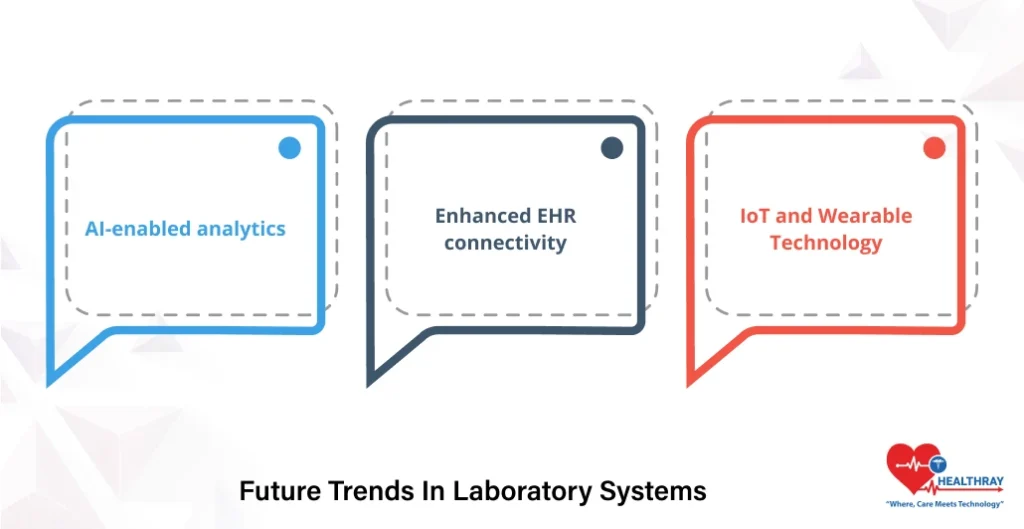
Let’s check out:
AI-enabled analytics
Artificial intelligence helps lab departments to optimize their equipment scheduling and predictive maintenance. Additionally, this system predicts the necessary maintenance requirements and automatically monitors the equipment performance. Overall, it reduces the unexpected downtime and improves the overall lab functionality.
Enhanced EHR connectivity
Integrating the laboratory and hospital ehr systems will ensure uninterrupted and seamless patient data flow. Furthermore, this connectivity provides real-time information to doctors and lab staff, thereby making the test results and patient history easily accessible. Overall, it improves the care coordination and helps hospitals make faster and tangible decisions.
IoT and Wearable Technology
Wearable technology and the Internet of Things are being used more often in labs these days to monitor samples remotely. These devices constantly track sample conditions such as temperature, humidity, and location, thus ensuring sample integrity and minimizing the need for manual checks. Furthermore, with real-time alerts and data analytics, staff can easily take timely actions for critical patients. Overall, iot and wearable technology help the lab department improve the accuracy and reliability of results.
Conclusion
Modern laboratory systems leveraging LIS, advanced tracking methods, and workflow automation dramatically enhance sample management, lab efficiency, and patient outcomes. Labs investing in these technologies position themselves at the forefront of laboratory innovation, ready to meet evolving healthcare demands. I hope the above blog provides you relevant insights on laboratory systems and how they help lab departments minimize error and provide accurate results in less time.

